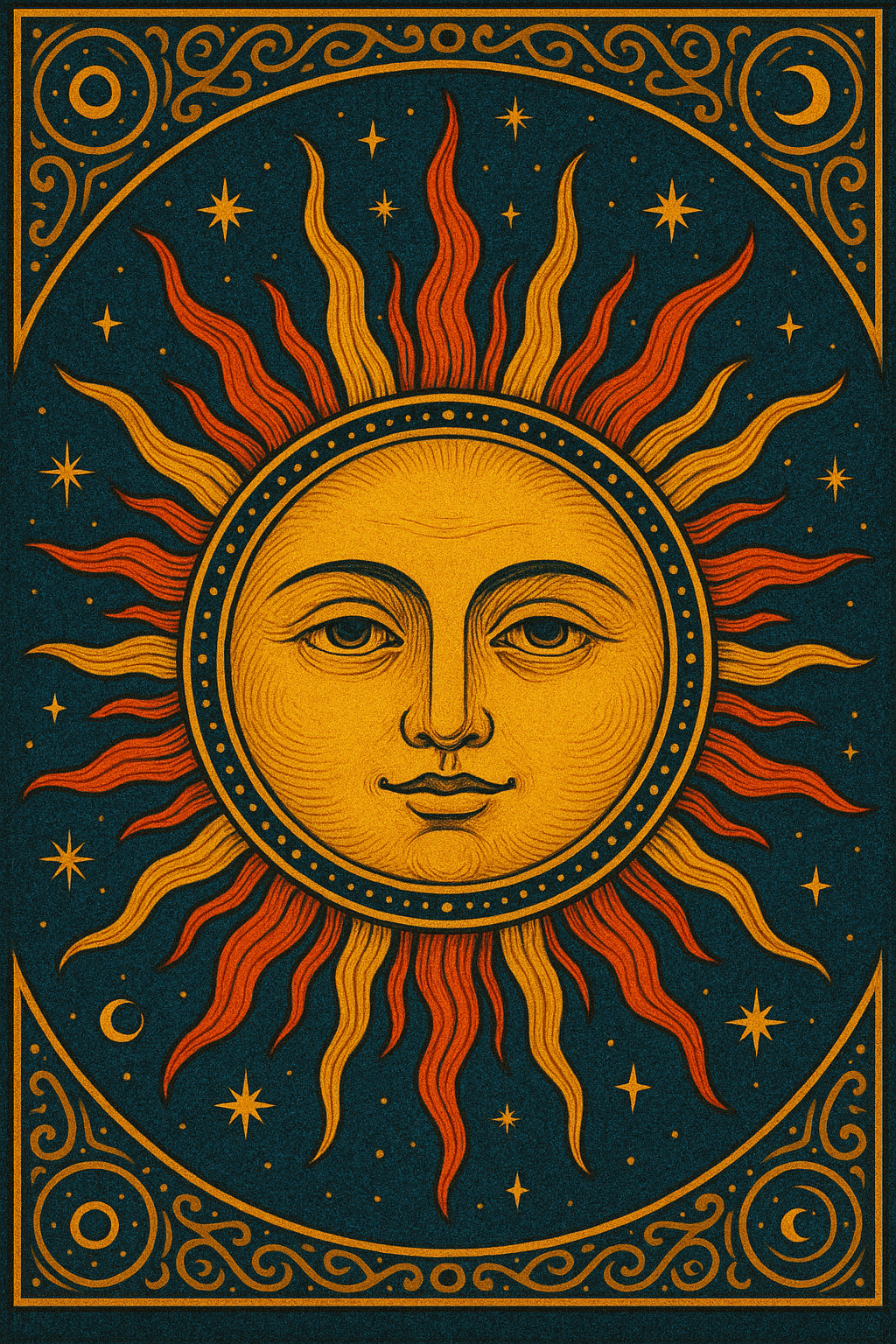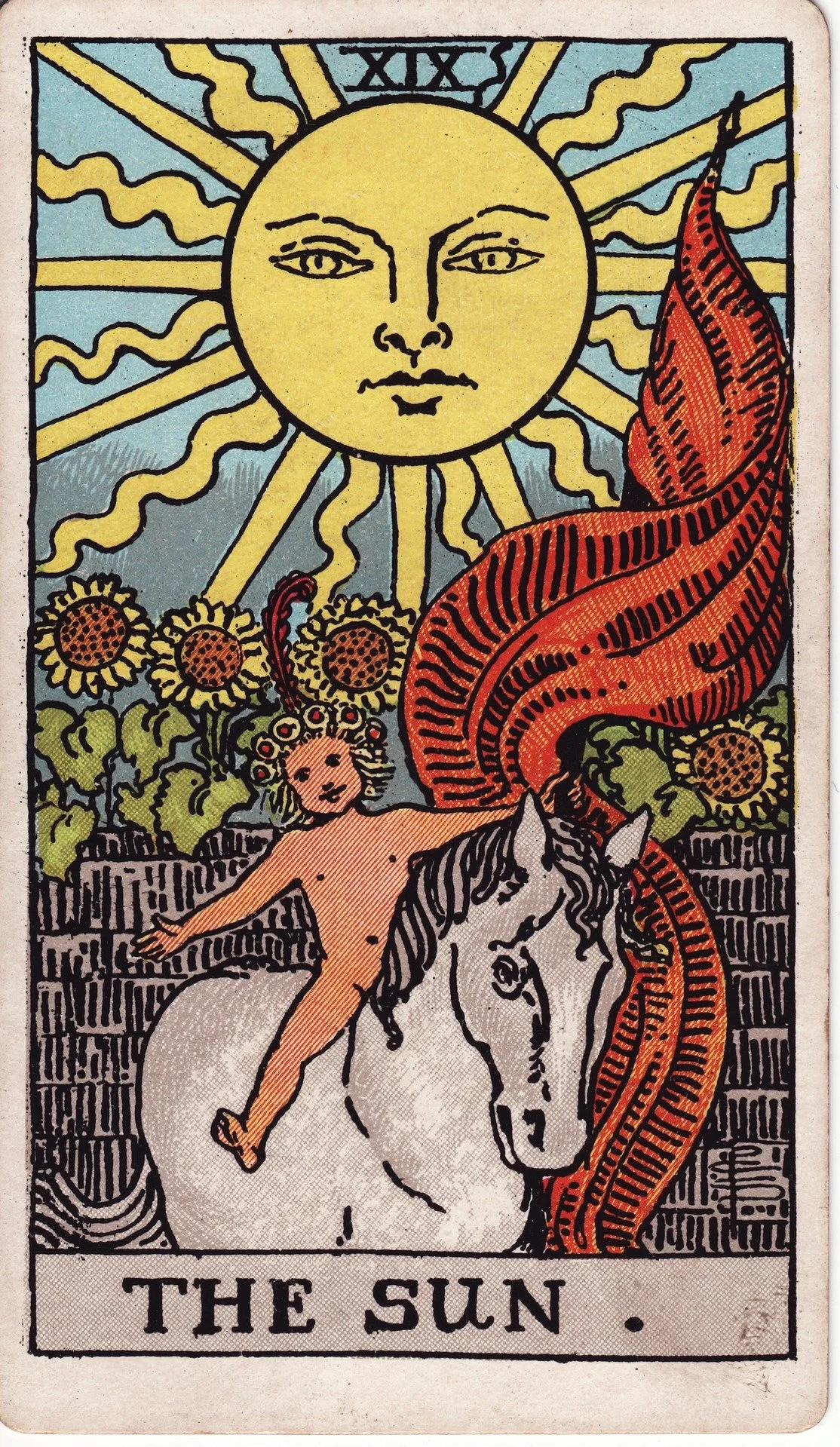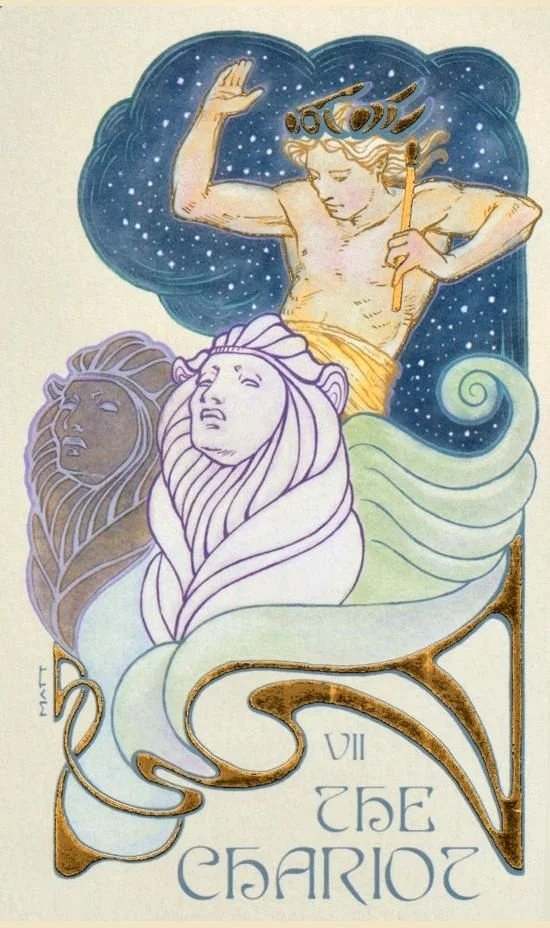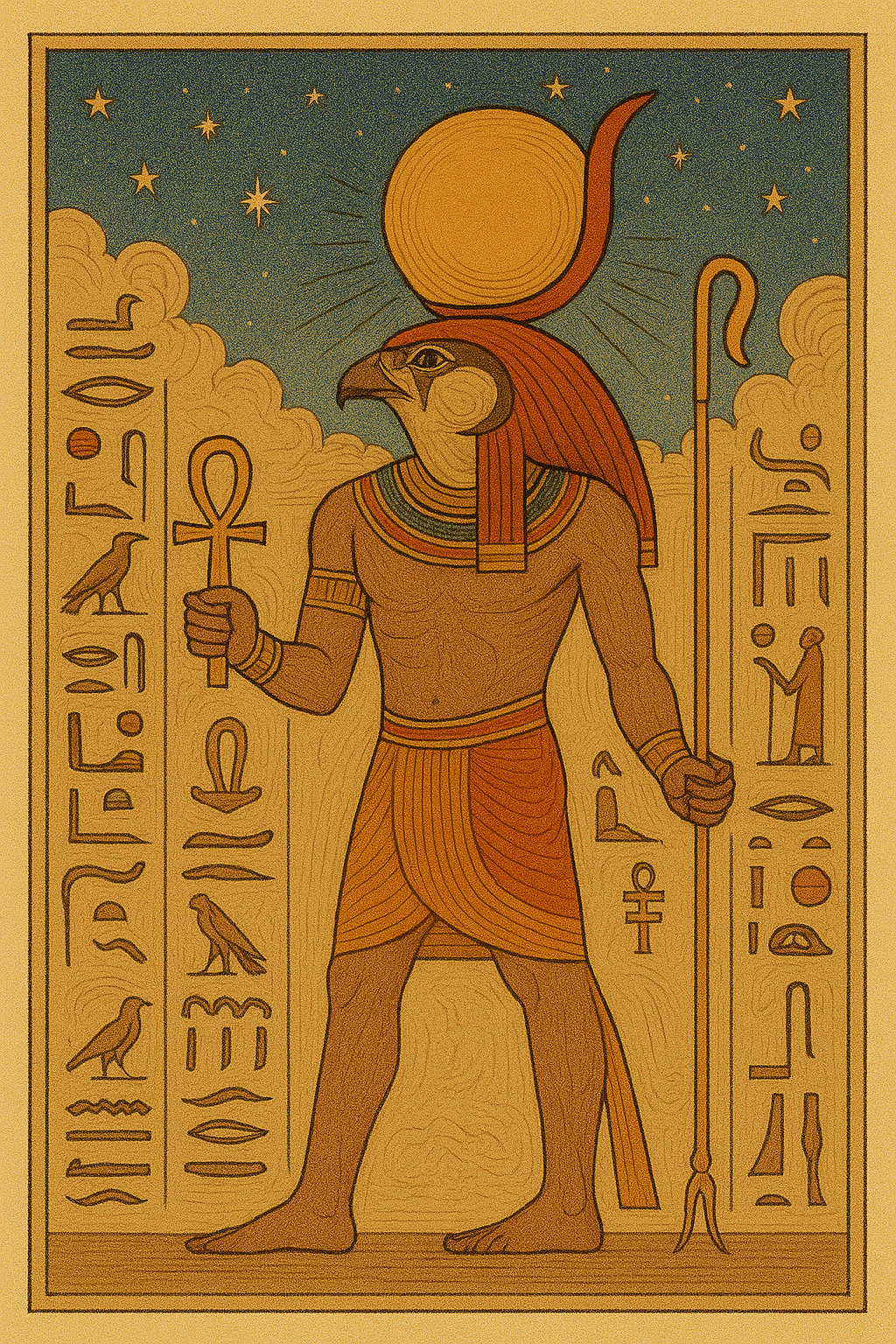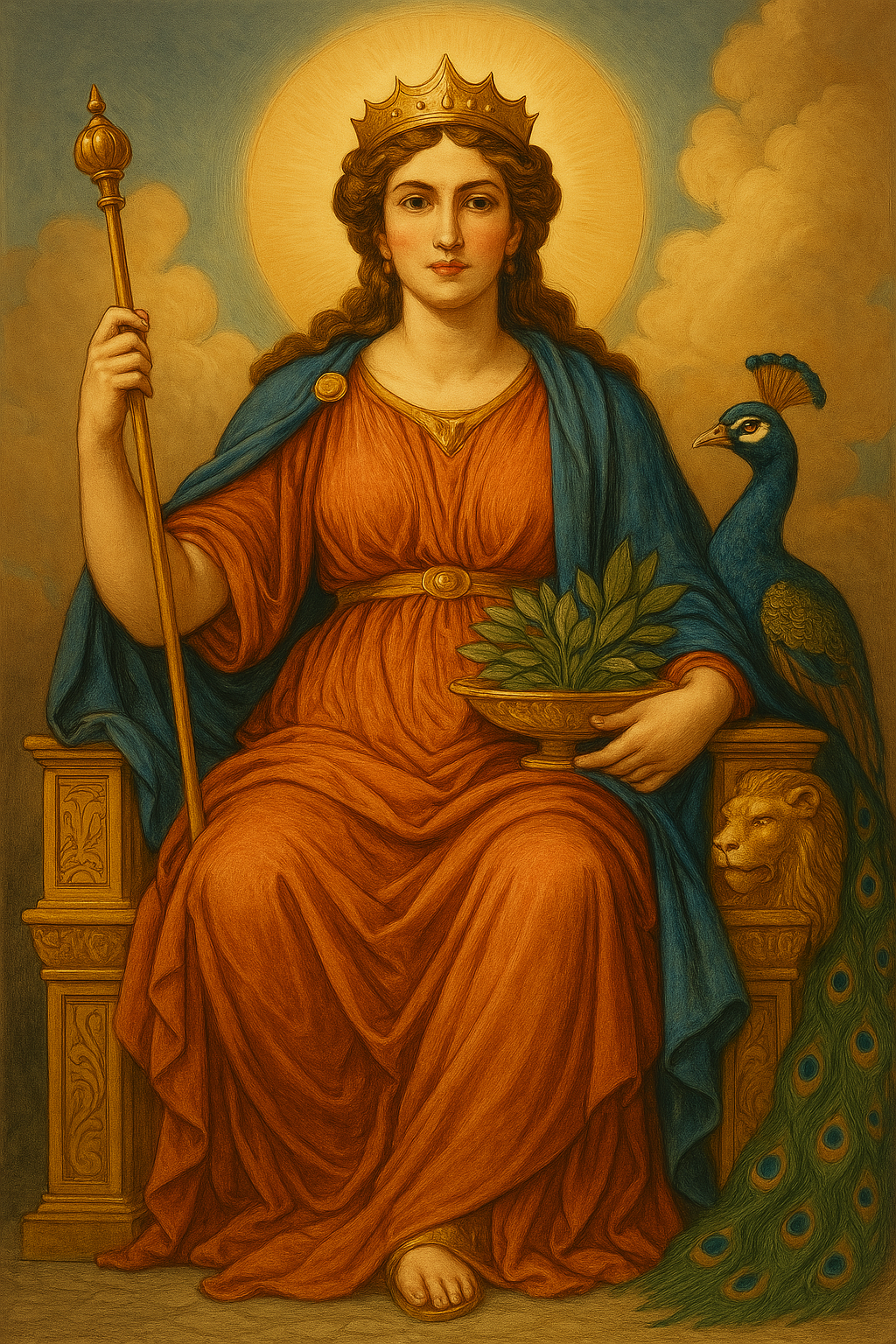Sabbat: Litha (Summer Solstice), June 20
June 20
Litha sits opposite of Yule on the Wheel of the Year as the longest day of the calendar year. Light and life are abundant. At mid-summer, the Sun God has reached the moment of his greatest strength. Seated on his greenwood throne, he is also Lord of the Forests, and his face is seen in countless ancient architecture peering from foliate masks. The Goddess is very pregnant and coming into her Mother aspect. From this point forward, each day becomes shorter and shorter until we reach Yule. We celebrate the beauty of life at its fullest point and the blossomed world around us. Gardens are abuzz with fae, insects and life.
The Christian religion converted this day of Jack-in-the-Green to the Feast of St. John the Baptist, often portraying him in rustic attire, sometimes with horns and cloven feet (like the Greek Demi-God Pan).
Midsummer Night's Eve is also special for adherents of the Faerie faith. The alternative fixed calendar date of June 25 (Old Litha) is sometimes employed by Covens. The name Beltane is sometimes incorrectly assigned to this holiday by some modern traditions of Wicca, even though Beltane is the Gaelic word for May.
(source: wicca.com)
Traditions and Practices
create offerings/houses for the Fae
foraging
press plants/flowers
sunbathing
swimming, water magick
dancing
sunset/evening walk
make herbal oil blends
Magickal Correspondences
Symbolism: the sun, fae/fairies, vitality, strength, passion, masculine/masculinity, the Green Man, the Sun God, the Oak King
Foods: fresh fruit and vegetables
Plants, Flowers, Trees, Fungus: carnation, chamomile, daisy, elder, fern, honeysuckle, ivy, lavender, lily, mugwort, oak, rose, thyme, vervain, yarrow
Incense: lemon, myrrh, pine, rose, wisteria
Crystals: amber, carnelian, calcite (orange), citrine, pyrite, quartz, sunstone, tiger’s eye
Colors: green, gold, orange, red, yellow
Animals/Insects: birds, cattle, horses
Tarot Cards: the Sun and the Chariot
Image: the Sun tarot card from the Rider Waite Tarot Deck
The Sun represents abundance, achievement, happiness, positivity, radiance, success and vitality
Image: the Chariot tarot card from the Ethereal Visions Tarot Deck.
The Chariot represents action, determination, focus, overcoming obstacles, progress, self-control, triumph, victory and willpower.
Deities Celebrated at Beltane
Áine: Áine is a Celtic goddess from Irish mythology, associated with summer, the sun, love, fertility, and sovereignty. She is also known as the Queen of the Fairies and is often linked to the Tuatha Dé Danann, the ancient deities of Ireland.
Áine is said to dwell at Knockainey Hill in County Limerick, which bears her name and was a site of midsummer festivals in her honor. She has strong ties to nature and agriculture, with legends describing her as a bringer of abundance and protector of crops and livestock.
Myths portray her as both goddess and fairy queen, capable of shifting between human and otherworldly realms. She is sometimes depicted as having a radiant, golden presence, symbolizing the sun at its peak, and is occasionally connected to the moon in later folklore.
Áine embodies themes of female empowerment, sensuality, and magical sovereignty, and remains a beloved figure in Irish pagan and neopagan traditions.
Amun: Amun is the god of the sun, air, and creation, and was regarded as the king of the gods in Theban theology. His name means “the hidden one”, reflecting his mysterious and transcendent nature. Initially worshipped as a local god of Thebes, Amun's influence grew significantly, and he eventually became part of the great triad of gods with Mut (his consort) and Khonsu (their son).
In Egyptian cosmology, Amun is considered the hidden force of creation, representing the primordial and invisible energy behind all things. His association with the sun was emphasized through his solar aspect, where he is often depicted as a man with a ram's head or as a full ram, symbolizing both fertility and the creative power of the universe. Amun was thought to be a self-created god, whose influence extended beyond the boundaries of Egypt, and he was associated with hidden potential and unseen forces that govern the world.
In the New Kingdom (c. 1550–1070 BCE), Amun rose to prominence as the chief deity of the Egyptian pantheon, particularly in Luxor and the Karnak temple complex, which became his primary center of worship. Amun’s role as the god of kingship and divine authority made him the patron god of the pharaohs, who often saw themselves as his earthly representatives.
Amun also merged with the sun god Ra to form Amun-Ra, representing both the hidden and manifest aspects of creation. Amun represents the mystery, power, and protection of the divine, and he remains one of the most iconic figures in Egyptian religious history.
Apollo: Apollo, the Greek god of the sun, prophecy, music, and healing, is a symbol of light, order, and harmony. Son of Zeus and Leto, and twin brother of Artemis, he wields a golden lyre and bow. As the patron of the Oracle of Delphi, he represents wisdom and divine foresight. Apollo also governs medicine, poetry, and the arts, embodying both creative and destructive power.
Helios: Balder, also spelled Baldur, was a beloved god in Norse mythology, known for his beauty, fairness, and purity. He was the son of Odin, the chief god, and Frigg, the goddess of marriage. Balder was associated with light, joy, and innocence, and was considered one of the most adored gods in Asgard. His tragic death, which was prophesied to signal the onset of Ragnarök (the end of the world), is one of the most significant myths in Norse lore. Balder's death, caused by the trickster god Loki, set in motion a chain of events that would eventually lead to the downfall of the gods and the destruction of the world.
Hestia: Hestia, the Greek goddess of the hearth, home, and family, is one of the original twelve Olympian gods. She is the daughter of Cronus and Rhea and is known for her gentle and peaceful nature. Hestia was the guardian of the hearth and symbolized domesticity, warmth, and community. Unlike other gods, she did not engage in many myths but was highly revered for her role in maintaining the home and the state. Hestia’s sacred flame was central to every household and city, embodying the stability and unity that comes from family and home life.
Horus: Horus is one of the most important gods in Egyptian mythology, associated with the sky, kingship, protection, and divine justice. Often depicted as a falcon or a man with a falcon head, Horus' right eye symbolized the sun and his left, the moon—making him a powerful celestial deity.
He is best known as the son of Osiris and Isis, and the hero of the mythic battle against his uncle Set, who murdered Osiris. After defeating Set, Horus became the rightful ruler of Egypt, and every pharaoh was considered his living embodiment on Earth.
Horus represents strength, honor, rightful leadership, and the enduring power of good over chaos. His Eye of Horus became a symbol of protection, healing, and watchfulness across Egyptian culture.
Juno: Juno is the Roman queen of the gods and the goddess of marriage, women, childbirth, and the protection of the state. She is the wife and sister of Jupiter (the Roman equivalent of Zeus) and is closely aligned with the Greek goddess Hera. Regal and powerful, Juno is often depicted wearing a crown and holding a scepter or accompanied by a peacock, her sacred animal.
Juno was deeply honored as the protector of Roman women and matronly virtue. She had several aspects, including Juno Regina (Queen), Juno Moneta (Warner or Advisor), and Juno Lucina (Bringer of Light, associated with childbirth). As a guardian of personal and civic life, Juno symbolizes strength, dignity, loyalty, and the sacred bonds of marriage and community.
Lugh: Lugh is one of the most celebrated gods in Irish mythology, known as a master of many skills, including war, crafts, poetry, music, magic, and more. Often called Lugh Lámhfhada ("Lugh of the Long Arm") for his skill with a spear, he is a shining warrior of the Tuatha Dé Danann and a symbol of brilliance, ingenuity, and leadership.
Lugh played a key role in the Second Battle of Mag Tuired, where he led the gods to victory against the Fomorians and slew his grandfather, the destructive giant Balor. He is also associated with the harvest festival Lughnasadh, which he established in honor of his foster mother, Tailtiu.
As a god of many talents, Lugh represents excellence, versatility, and the ideal heroic figure—one who unites wisdom, strength, and creativity to bring balance and prosperity to his people.
Minerva: Minerva is the Roman goddess of wisdom, strategic warfare, crafts, and the arts, equivalent to the Greek goddess Athena. She is often depicted wearing a helmet and armor, sometimes with an owl—symbolizing insight and intellect—by her side. Unlike Mars, who represents brute force, Minerva embodies the disciplined, strategic side of war and the power of reason over violence.
She was one of the Capitoline Triad alongside Jupiter and Juno, and was deeply respected as a guardian of learning, justice, and civilization. Minerva was also the patron of artisans, inventors, and teachers. As a virgin goddess, she symbolizes clarity of thought, creativity, and the strength found in intelligence and skill.
Sol: Sol is the Roman god and personification of the sun, equivalent to the Greek god Helios. He is often depicted as a radiant, golden figure driving a chariot across the sky, pulled by fiery horses, bringing daylight to the world. Although initially a minor deity in early Roman religion, Sol Invictus ("the Unconquered Sun") rose to prominence during the later Roman Empire, especially under emperors like Aurelian, who promoted him as a supreme cosmic power.
Sol symbolizes light, vitality, order, and the eternal cycle of day and night. His rising and setting marked the passage of time and the promise of renewal, making him a powerful symbol of life, stability, and divine presence shining over all creation.
